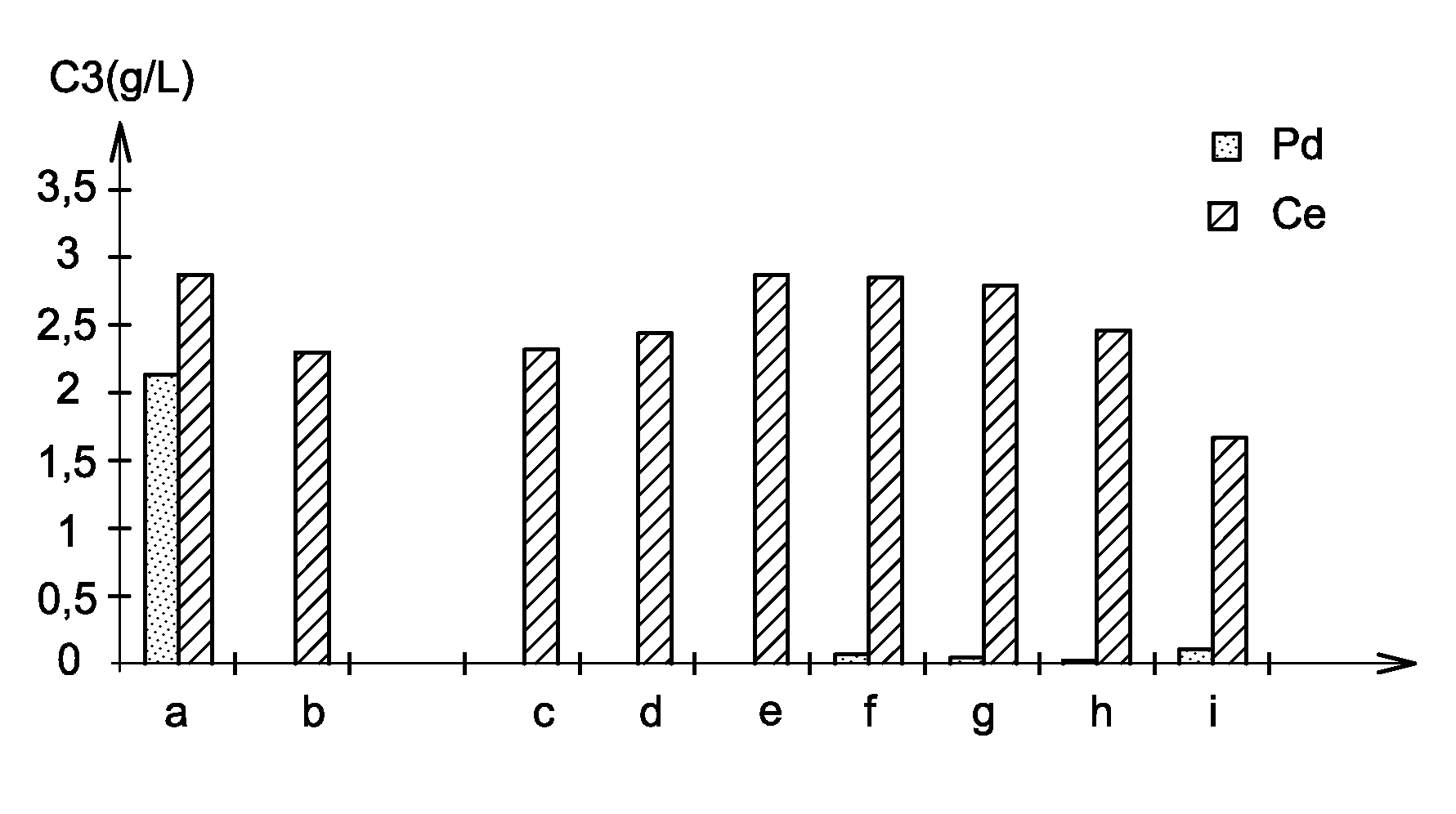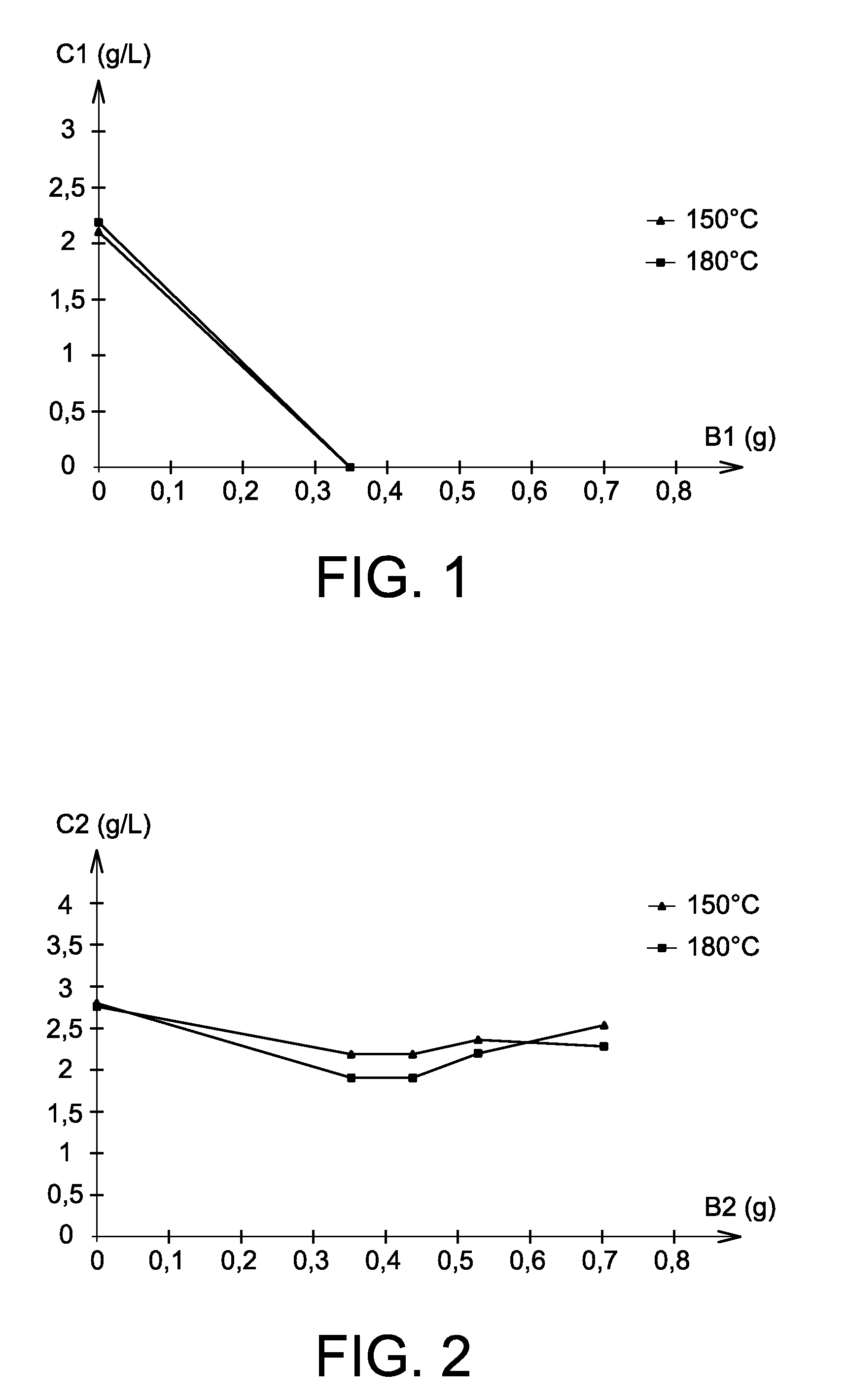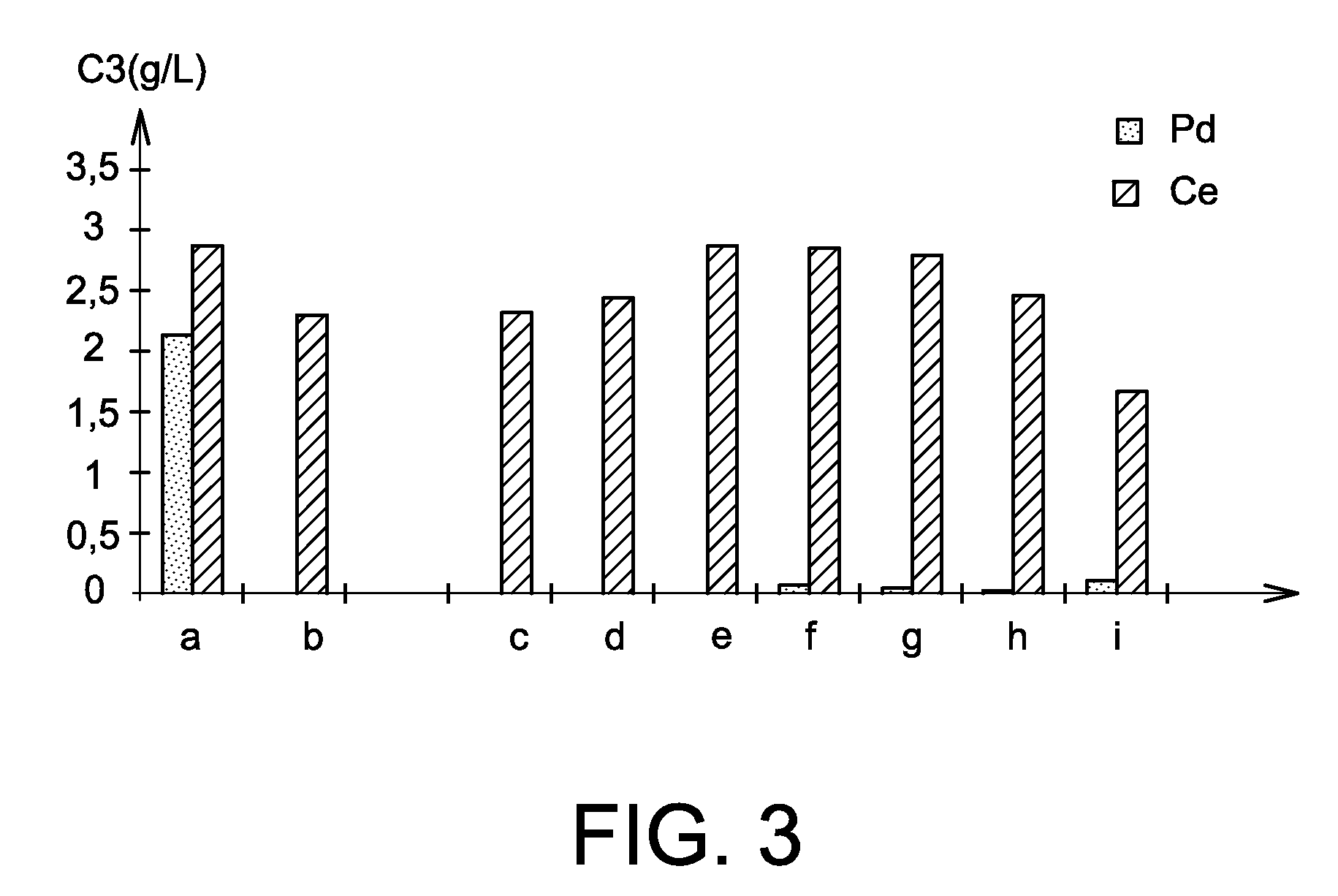Process for separating at least one platinoid element from an acidic aqueous solution comprising, besides this platinoid element, one or more other chemical elements
a technology of platinoid element and acidic aqueous solution, which is applied in the preparation of ruthenium/rhodium/palladium/osmium/iridium/platinum compounds, climate sustainability, and reactor fuel elements
- Summary
- Abstract
- Description
- Claims
- Application Information
AI Technical Summary
Benefits of technology
Problems solved by technology
Method used
Image
Examples
example 1
[0064]The aim of the present example is the study of palladium / cerium separation in nitric solution implementing the use of benzylic alcohol.
[0065]In this example, palladium chloride ((NH4)2PdCl4) and cerium nitrate (Ce(NO3)3) are used, palladium being a platinoid element and cerium being one of the fission products present in the raffinates and considered as representative of all the lanthanides.
[0066]For each of the tests of this example, 10 mL of 1 mol / L nitric acid solution are used, to which is added 71 mg of palladium chloride and 87 mg of cerium nitrate i.e. 0.2 mmol of palladium and 0.2 mmol of cerium. After addition of the desired amount of benzylic alcohol, the solutions are placed in Parr digestion bombs and heated to a desired temperature for 16 hours.
[0067]Different series of tests are carried out with variable amounts of benzylic alcohol at a given temperature:[0068]a series of tests at 150° C. with respective benzylic alcohol amounts of 0; 0.35; 0.4; 0.5 and 0.7 g;[00...
example 2
[0075]The aim of the present example is the study of palladium / cerium separation in nitric solution implementing the use of different alcohols: benzylic alcohol (part b of FIG. 3), 4-methoxybenzylic alcohol (part c of FIG. 3), glycerine (part d of FIG. 3), 1-phenyl-1-ethanol (part e of FIG. 3), ethylene glycol (part f of FIG. 3), cinnamyl alcohol (part g of FIG. 3), 4-hydroxybenzylic alcohol (part h of FIG. 3) and cyclohexanol (part i of FIG. 3). A test was carried out without alcohol (part a of FIG. 3).
[0076]In this example, palladium chloride ((NH4)2PdCl4) and cerium nitrate (Ce(NO3)3) are used, palladium being a platinoid element and cerium being one of the fission products present in the raffinates and considered as representative of all the lanthanides.
[0077]For each of the tests of this example, 10 mL of a 1 mol / L nitric acid solution is used, to which is added 71 mg of palladium chloride and 87 mg of cerium nitrate i.e. 0.2 mmol of palladium and 0.2 mmol of cerium. After addi...
example 3
[0080]In order to get as close as possible to a system encountered in the treatment of aqueous effluents from the reprocessing of spent fuels, selective precipitation tests of palladium were carried out on a model solution of nitric acid (1.5 M) corresponding to the composition described in the table below and a total nitrates load of 3.5 mol / L.
[0081]
OxideConcentrationconcentrationMetalof metalOxide used(g / L)elementelement (g / L)Na2O18.739Na13.90Al2O37.378Al3.90ZnO0.209Zn0.17ZrO29.479Zr7.02TeO21.272Te1.02Cs2O5.757Cs5.43SrO1.703Sr1.44BaO3.632Ba3.25SnO20.128Sn0.10Cr2O30.222Cr0.15Fe2O31.698Fe1.19MnO21.997Mn1.26La2O36.444La5.49Nd2O314.878Nd12.75Ce2O35.195Ce4.44Pr2O32.821Pr2.41MoO39.413Mo6.27P2O50.925P0.40——Pd2.98Total91.8970.61
[0082]To carry out the tests, 10 mL of the solution were used. After addition of 500 mg of benzylic alcohol, the solution was placed in a Parr digestion bomb and heated to 150° C. for 16 hours. This manipulation was repeated 4 times to offset any experimental error...
PUM
| Property | Measurement | Unit |
|---|---|---|
| temperature | aaaaa | aaaaa |
| temperature | aaaaa | aaaaa |
| solubility | aaaaa | aaaaa |
Abstract
Description
Claims
Application Information
 Login to View More
Login to View More - R&D
- Intellectual Property
- Life Sciences
- Materials
- Tech Scout
- Unparalleled Data Quality
- Higher Quality Content
- 60% Fewer Hallucinations
Browse by: Latest US Patents, China's latest patents, Technical Efficacy Thesaurus, Application Domain, Technology Topic, Popular Technical Reports.
© 2025 PatSnap. All rights reserved.Legal|Privacy policy|Modern Slavery Act Transparency Statement|Sitemap|About US| Contact US: help@patsnap.com



